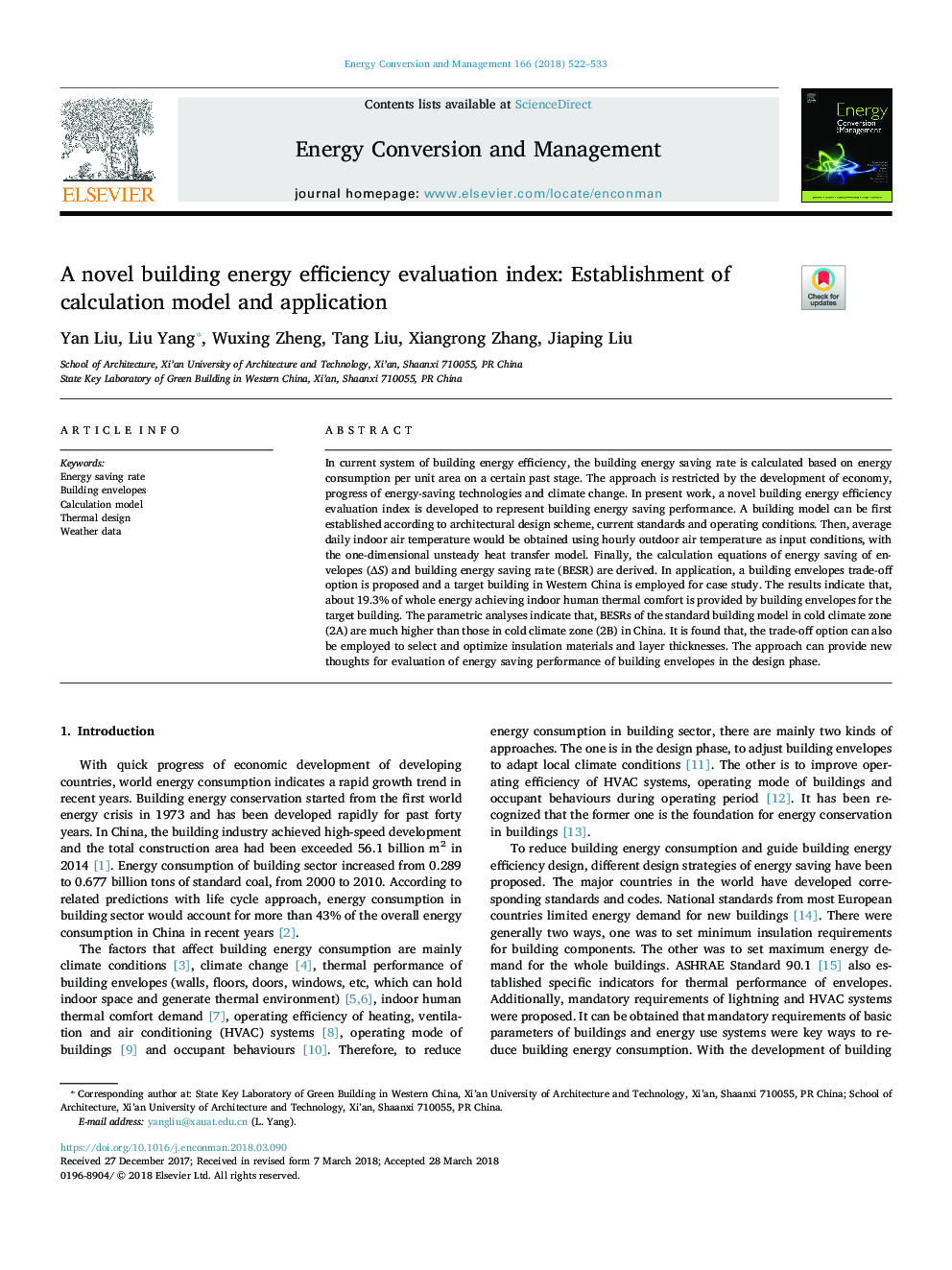| Article ID | Journal | Published Year | Pages | File Type |
|---|---|---|---|---|
| 7158394 | Energy Conversion and Management | 2018 | 12 Pages |
Abstract
In current system of building energy efficiency, the building energy saving rate is calculated based on energy consumption per unit area on a certain past stage. The approach is restricted by the development of economy, progress of energy-saving technologies and climate change. In present work, a novel building energy efficiency evaluation index is developed to represent building energy saving performance. A building model can be first established according to architectural design scheme, current standards and operating conditions. Then, average daily indoor air temperature would be obtained using hourly outdoor air temperature as input conditions, with the one-dimensional unsteady heat transfer model. Finally, the calculation equations of energy saving of envelopes (ÎS) and building energy saving rate (BESR) are derived. In application, a building envelopes trade-off option is proposed and a target building in Western China is employed for case study. The results indicate that, about 19.3% of whole energy achieving indoor human thermal comfort is provided by building envelopes for the target building. The parametric analyses indicate that, BESRs of the standard building model in cold climate zone (2A) are much higher than those in cold climate zone (2B) in China. It is found that, the trade-off option can also be employed to select and optimize insulation materials and layer thicknesses. The approach can provide new thoughts for evaluation of energy saving performance of building envelopes in the design phase.
Related Topics
Physical Sciences and Engineering
Energy
Energy (General)
Authors
Yan Liu, Liu Yang, Wuxing Zheng, Tang Liu, Xiangrong Zhang, Jiaping Liu,
